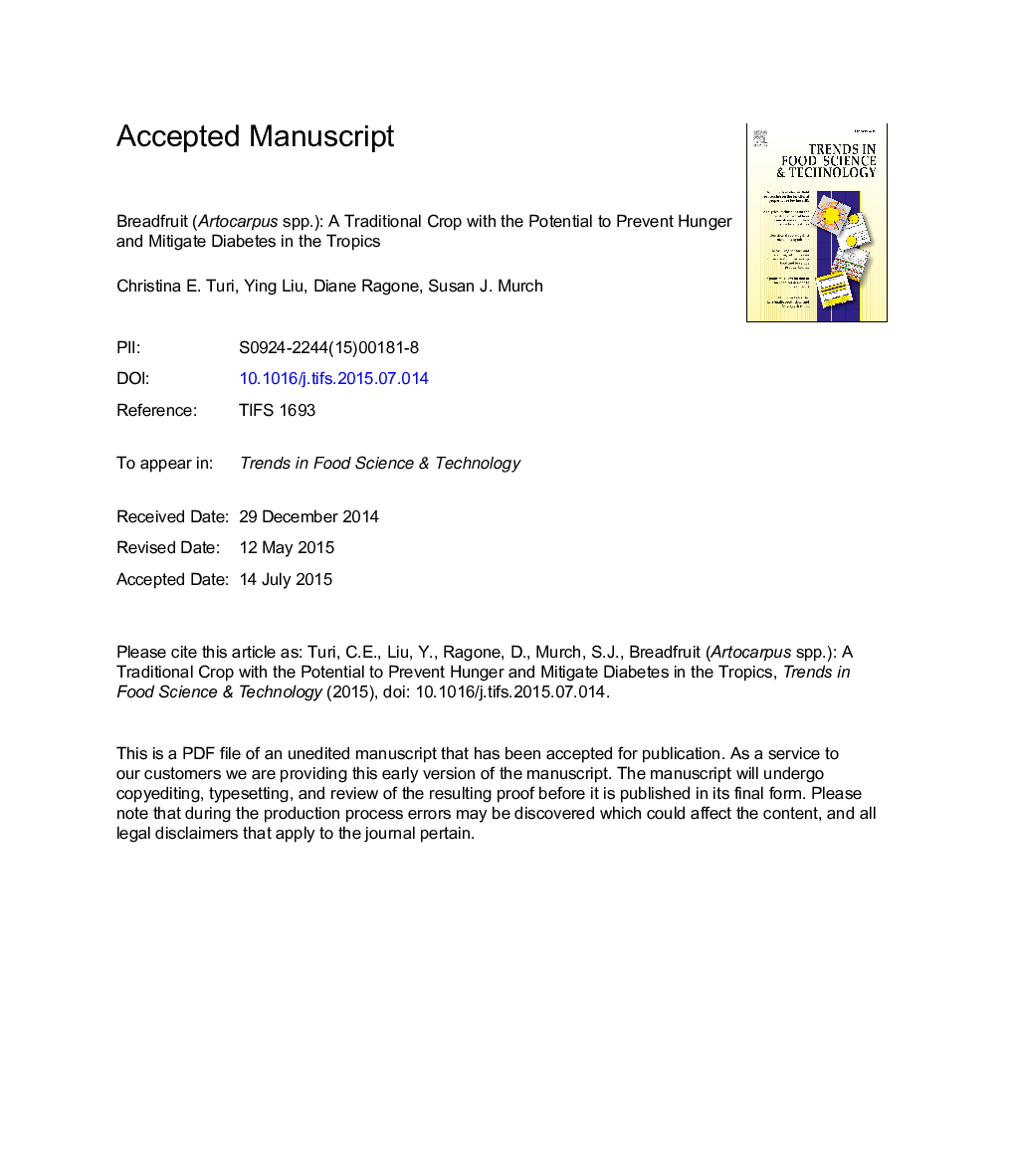| Article ID | Journal | Published Year | Pages | File Type |
|---|---|---|---|---|
| 10894749 | Trends in Food Science & Technology | 2015 | 32 Pages |
Abstract
More than 80% of the world's hungry live in tropical and subtropical regions where small increases in the costs of imported food, fuel and fertilizer create periods of increased food insecurity. Over time, the traditional knowledge and the traditional crops of the region are being lost and diet-based diseases such as type II diabetes are increasing in frequency. Breadfruit, Artocarpus altilis (Parkinson) Fosberg, has been a staple food and traditional crop in the Pacific for more than 3000 years and is now being cultivated for food security in the Caribbean and other tropical regions. While there is some evidence to suggest that a traditional diet based on breadfruit and other Pacific staples can prevent onset of type II diabetes, detailed scientific studies have not been conducted. One of the important issues is the wide variability in reported nutritional composition of the fruit in studies that included many different cultivars grown in widely different ecosystems. We conducted a review of the nutritional data to determine the best consensus for fruit nutrition. We identified 41 individual studies that provide some proximate, carbohydrate, vitamin and/or mineral data. A majority of the studies do not provide sufficient botanical data such as species, cultivar name, or descriptive information that would indicate the stage of maturity of the fruit or factors of the local environment such as soil composition or rainfall. Despite these shortcomings, compositional data for breadfruit suggests that it has potential to mitigate type II diabetes and obesity in Oceania and elsewhere in the tropics where breadfruit is grown. Further studies will identify specific elite cultivars recommended for this purpose.
Related Topics
Life Sciences
Agricultural and Biological Sciences
Food Science
Authors
Christina E. Turi, Ying Liu, Diane Ragone, Susan J. Murch,
